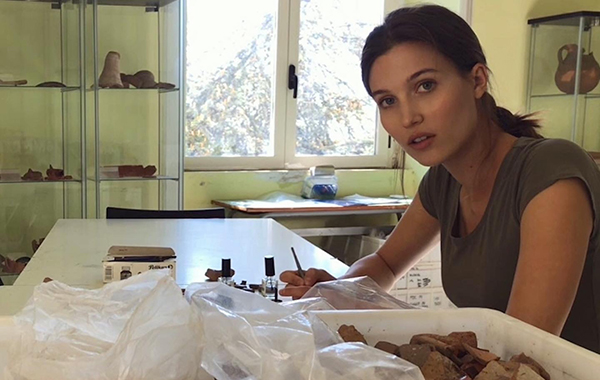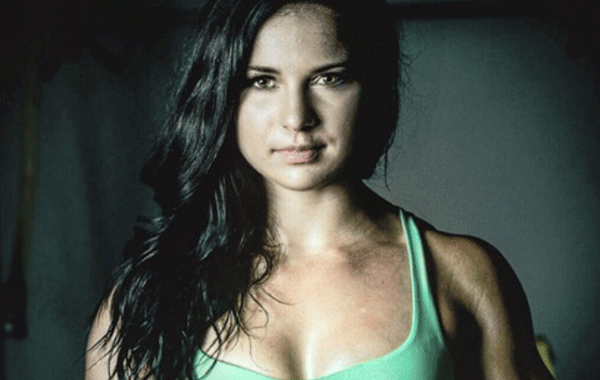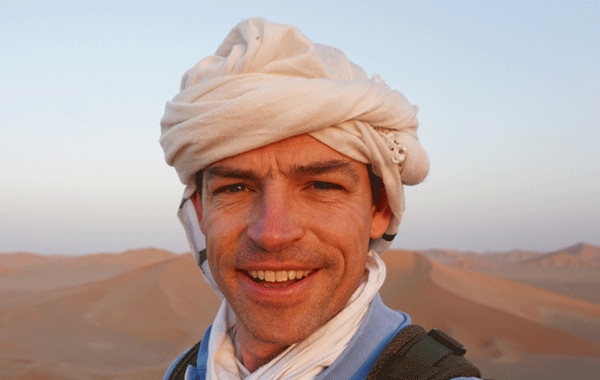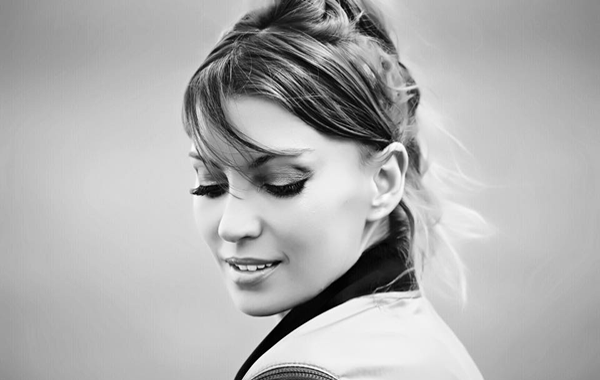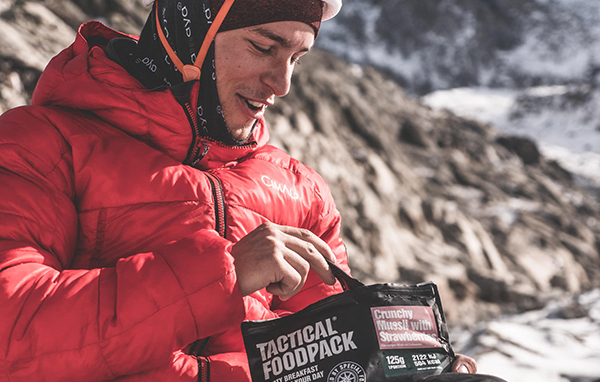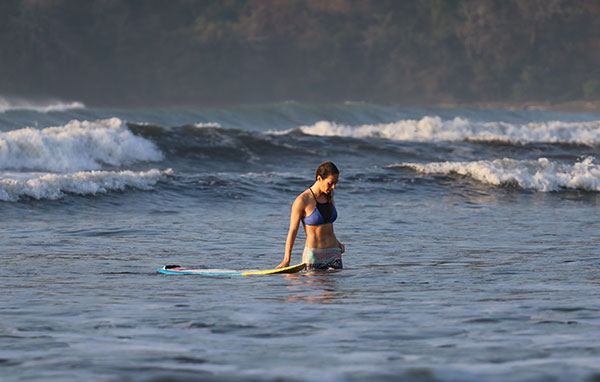What is the best thing about your job and why?
Bringing the past alive is the best thing about archaeology. Finding things that no one else had touched for thousands of years is pure magic. It feels as if they waited all this time for me to be brought back to light. Those hidden gems always give me heart palpitations. But I also believe that «what’s past is prologue», as Shakespeare wrote. Understanding the past is essential in predicting the future, and that makes archaeology even more interesting. Otherwise, I love to be away from the rest of the world, in a place where time stops. The more distant and secluded the place is, the better. Being physically and emotionally challenged is something I look forward to. I like to get dirty and feel the sweat on my skin. It’s basic, but it makes me feel alive and free.
What have been some of your most scariest/exciting/moving moments as an archaeologist?
Excavating at the border between enemy states and witnessing rocket attacks was one of the most surreal moments of my life. The most exciting moment was the discovery of an untouched crusader’s grave hidden in a cliff overlooking the sea. However, the most moving one was uncovering a 2,000-year-old ring on the coast of Tel Achziv on the last day of the project. I felt an instant connection with the person who wore it, after all a ring is a personal object and often a sentimental one. I invented in my head a fat merchant because the ring was enormous and because of the location where it was found. I could easily fit it on two fingers held together.
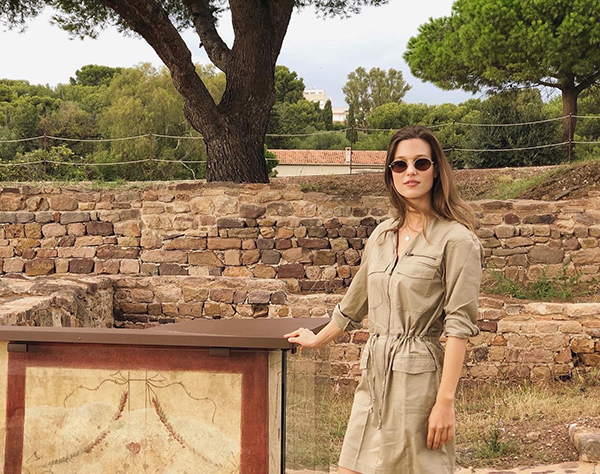
How do you prepare for a dig?
Excavating is always physically and mentally challenging, even more, when working in difficult locations such as deserts, rainforests, or a cave. Temperatures play a significant role in testing your resistance and adaptation skills. That’s why it’s important to be prepared. Before going on a dig, I focus mainly on core training that helps prevent injuries, reduces potential pain and strengthens the back.
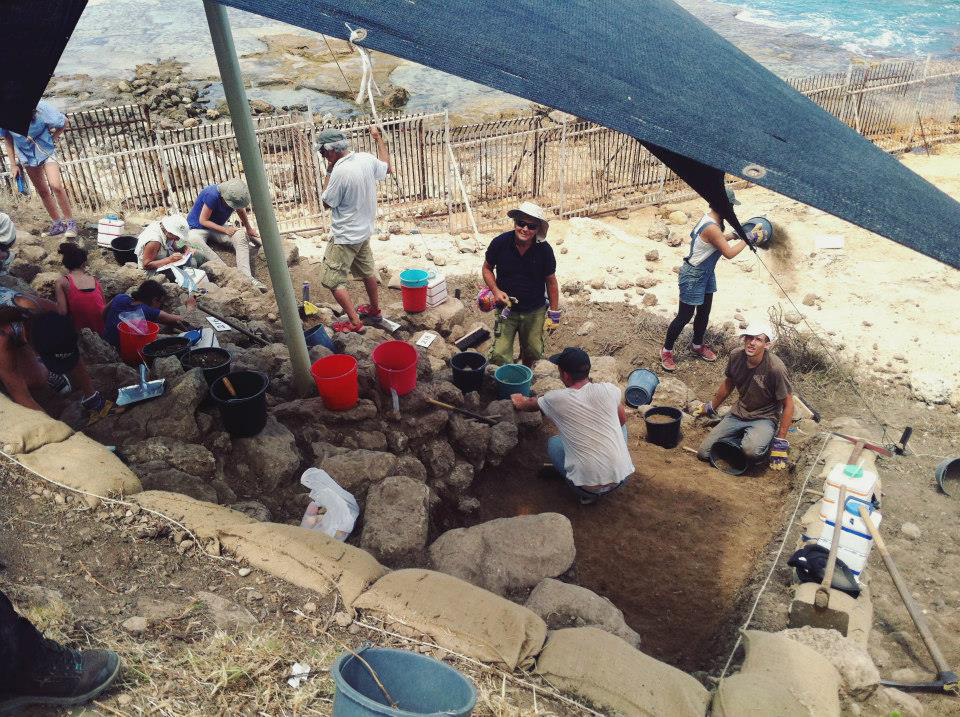
As a writer, you explore the most intimate and gruesome aspects of the ancient world, like masturbation, suicide, prostitution or cannibalism. How do you choose your subjects?
I’m interested in all aspects of human life, which also means the so-called shameful or dirty topics. I believe it’s important to break taboos, and my articles are essentially about that.
You’re also a model. Tell us how do you balance your research work with modelling?
I never imagined that modelling would become my longest work relationship or that it would be compatible with my work as an archaeologist. I was still a student when I became a model- an archaeologist in the making. Modelling was supposed to be only a short adventure, an accompaniment to my degree. Since the beginning, it has been all about prioritizing the right thing at the right moment, and I have prioritized archaeology for most of the time. Also, despite archaeology and modelling being complete opposites, they share some similarities. They both allow you to travel, require discipline and good shape and are open to other cultures.
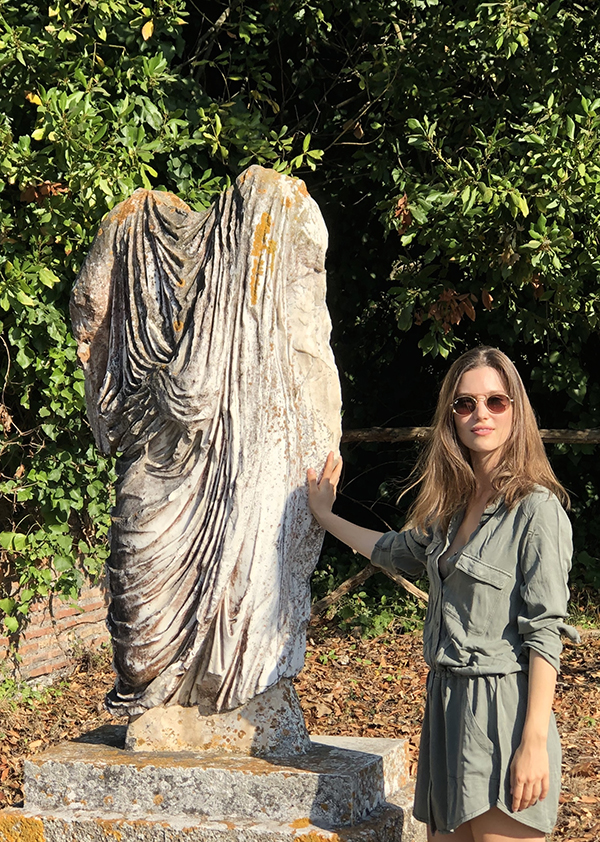
What have been some of your most exciting/interesting moments as a model?
The travelling aspect of modelling is fun, although I’m not too fond of airports and flying. Shooting in beautiful locations is always inspiring. But I enjoy the most witnessing the creative process of modelling, especially regarding self-transformation, which always surprises me.
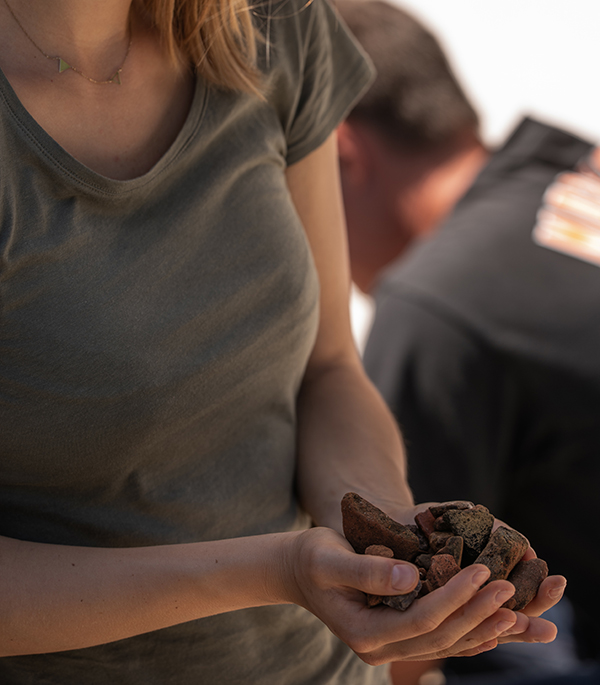
If you weren’t an archaeologist or a model, what would you be?
An entomologist. I’m fascinated by the world of insects.
Where can our audience find out more about you and your writing?
On my website, but you can also follow me directly on my Haaretz page.

